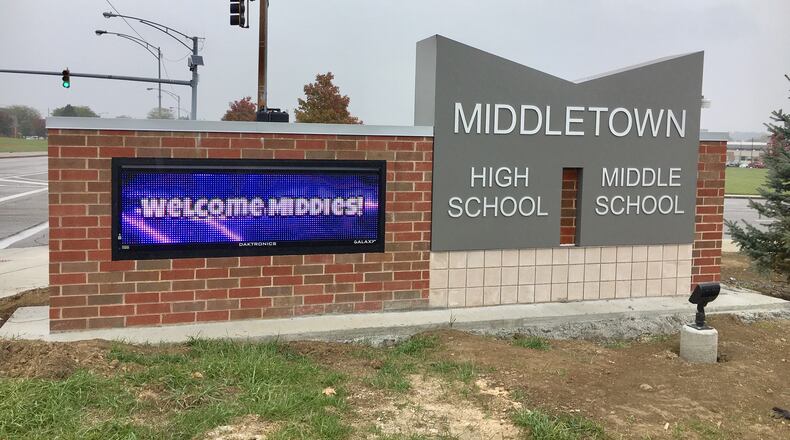The two school shutdowns will impact more than 2,000 of Middletown’s 6,300 students and their families.
Students will now have to learn remotely from home through the rest of the fall semester, which will end Dec. 18 when the district then goes into winter break through early January, said officials.
The lack of teachers at the high school, many of whom are held out from work due to coronavirus quarantine requirements, played a role in switching to all remote learning, said officials.
“We had 15 out last week plus four more this week, so staffing is definitely one of the reasons,” said Middletown Schools’ Spokeswoman Elizabeth Beadle.
“We’ve been using all our district subs plus administrators to cover (teach) classes these last couple of weeks,” said Beadle.
All Middletown schools had been on a hybrid schedule of alternate day, in-person classes since Oct. 19 after being one of the few area districts to start the school year in August in all remote learning.
Early in November Middletown Middle School spent two weeks in remote learning due to the coronavirus.
Middletown now joins Ross and Talawanda high schools in recently switching from live classes to remote learning due to area upswings in coronavirus positive tests and lack of teachers, substitute instructors and non-teaching school staffers.
“After the holiday break, we will return to our hybrid model. The first day back is Jan. 5,” district officials said.
Hamilton Schools Superintendent Mike Holbrook sent a warning message to school parents stating “over the Thanksgiving break, we have experienced a significant increase in staff/student quarantines and illness. Quarantines and illness have placed tremendous staffing challenges in the areas of transportation, food services, administration, and teachers in the classroom.”
“If these challenges continue, we will be unable to staff our buildings at a level appropriate to serve students,” said Holbrook, who oversees the 10,000-student school system.
“The decision to convert to a remote learning model could be communicated with very little advanced notice. No decision has been made at this time to convert to a complete remote model but given the current trends of staff quarantines and illness, the possibility becomes greater daily.”
About the Author

